Isfahan souvenirs & handicrafts (Best to buy) + Photos
Like a gem in the heart of Iran, Isfahan is a city that resonates with echoes of rich history, cultural diversity, and unparalleled artistic heritage. Beyond its breathtaking architecture and iconic landmarks, Isfahan is a heaven for those seeking to immerse themselves in a world where every intricate pattern, every brushstroke, and every masterful stroke of a craftsman’s tool tells a story of centuries past. Among the city’s many treasures, its souvenirs and handicrafts shine as radiant emblems of Isfahan’s cultural legacy. As we delve into the realm of Isfahan’s souvenirs and handicrafts, we go on a journey through time, culture, and artistic brilliance, where every creation becomes a gateway to understanding the heart of this enchanting city.
What is Isfahan Famous for?
Isfahan has etched its name as a hub for remarkable handicrafts and souvenirs. Among its renowned treasures, Persian carpets stand tall, epitomizing the city’s artistic prowess with intricate designs and vibrant hues that tell tales of ancient stories and myths.
Isfahan’s metalwork enchants visitors with delicate filigree patterns and the art of Minakari, where vibrant enamel colors adorn exquisite trays, plates, and jewelry, each piece a testament to the city’s mastery over metals.
Additionally, the city’s prowess in Persian miniature painting and illuminated manuscripts allows travelers to capture the essence of its cultural narrative, rendering these artworks cherished souvenirs.
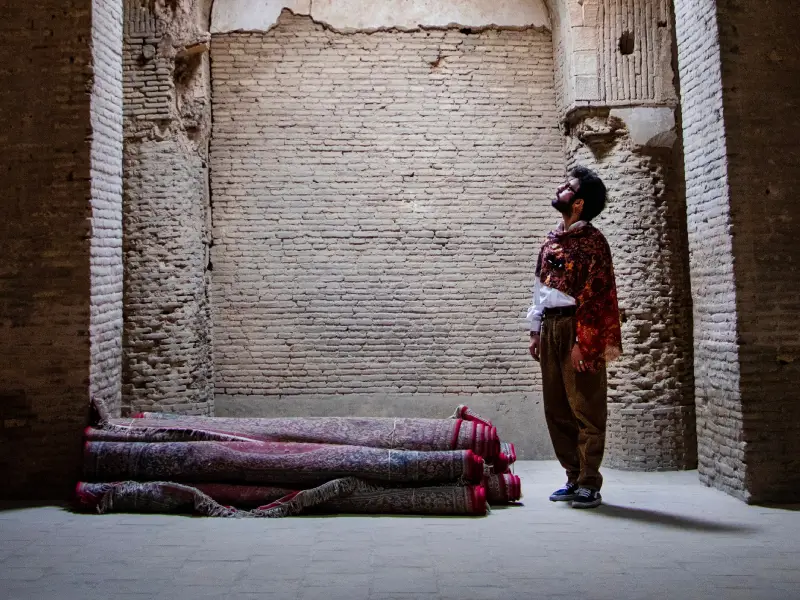
Beyond this, Isfahan’s pottery bears witness to its architectural beauty, echoing the turquoise domes in blue pottery adorned with intricate cobalt patterns.
Traditional textiles like “Golabetoon” and “Termeh” are a chance to embrace Isfahan’s fabric heritage, while its silverware, jewelry, and woodwork exemplify the city’s knack for blending heritage with contemporary designs.
The calligraphy and illumination that grace Isfahan’s manuscripts and artworks provide a tangible connection to the city’s spiritual heritage. Continuing, we will delve into the examination of some of the finest and most captivating souvenirs of Isfahan.
Gaz
One of the best souvenirs to buy from Isfahan can be Persian Gaz, as it is very delicious and popular. Isfahan Gaz, a culinary masterpiece renowned throughout Iran and beyond, captures the essence of Isfahan’s rich cultural heritage in every delectable bite.
This iconic confection shows the city’s centuries-old traditions of craftsmanship and culinary artistry. Crafted from a harmonious blend of premium ingredients, including pistachios, almonds, rosewater, and honey, Isfahan Gaz offers a symphony of flavors that evoke the charm and elegance of the city.

The process of creating Isfahan Gaz is a meticulous labor of love, where skilled artisans carefully blend and cook the ingredients to achieve the perfect balance of sweetness and nuttiness.
The resulting nougat is then cut into small, bite-sized pieces and dusted with powdered sugar to enhance its visual appeal. Each bite of Isfahan Gaz carries a sense of authenticity and heritage, allowing both locals and visitors to experience a genuine taste of Isfahan’s culinary legacy.
Poolaki
Isfahan Poolaki, a confectionery treasure originating from Iran’s cultural heart, has captivated palates with its distinctive taste and enchanting presentation. Often referred to as “Persian fairy floss” or “cotton candy,” Poolaki is more than just a sweet; it is a culinary work of art that reflects the city’s elegance.
Delicate wisps of sugar are meticulously spun into ethereal threads, reminiscent of Isfahan’s intricate architectural designs. However, what truly makes Poolaki exceptional are the flavors infused within.
The gentle aroma of saffron and the delicate essence of rosewater intertwine, creating a harmonious dance of tastes that embodies the essence of Persian cuisine. Sometimes, these strands are embellished with pistachios, adding a delightful crunch that pays homage to Iran’s love for this cherished nut.
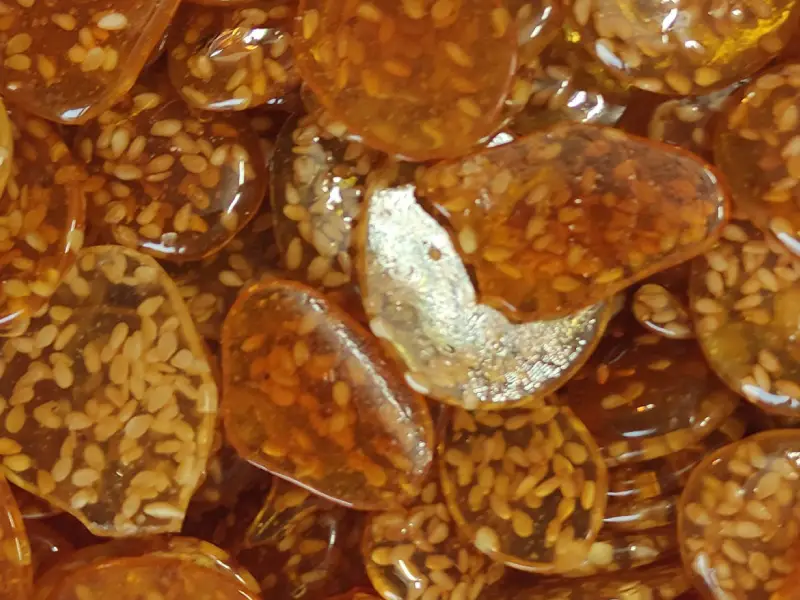
Crafting Isfahan Poolaki is a skillful art involving the deft hands of artisans who transform simple sugar into intricate clouds of delight.
This process mirrors Isfahan’s dedication to preserving its rich heritage while embracing innovation. Isfahan Poolaki is a cherished edible souvenir that encapsulates the city’s cultural heritage, making it a perfect gift to share or a personal indulgence.
With each sweet bite, one can experience the fusion of flavors that have been enjoyed for generations in Isfahan, making Isfahan Poolaki a testament to the city’s ability to weave tradition and innovation into a treat that transcends time.
Sohan Asali
With its origins tracing back to the Safavid Empire era, Sohan Asali has been a cherished treat for generations. This traditional Iranian sweet is made using a combination of honey and saffron, both of which hold cultural significance in Persian cuisine.
Saffron, the “red gold” of spices, infuses the treat with its distinctive color and aroma, while honey imparts a natural sweetness that is synonymous with comfort and tradition.
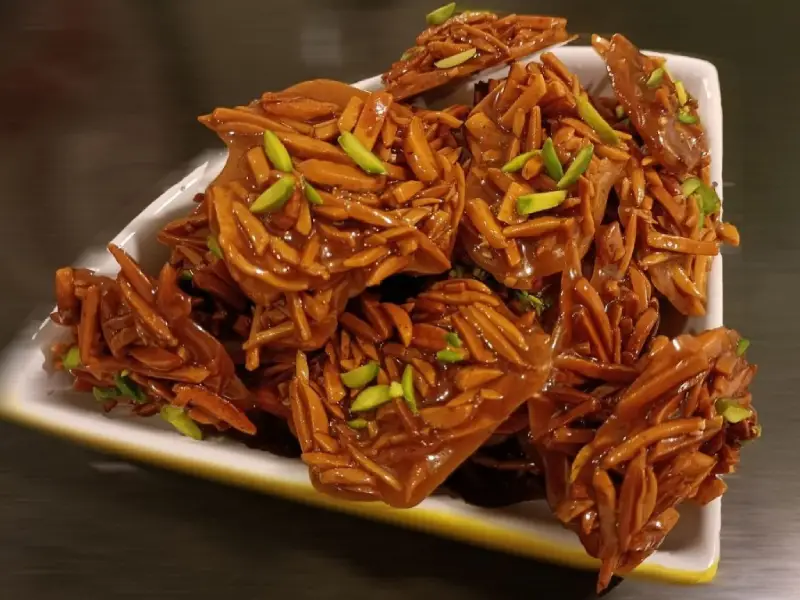
The cooking method of Isfahan Sohan Asali is a testament to the artisans’ dedication to their craft. The process begins by heating honey and stirring it until it thickens, developing a rich and velvety consistency.
Saffron threads are then carefully crushed and added to the mixture, infusing it with its signature hue and distinct flavor. The mixture is continuously stirred and cooked until it reaches the desired consistency, and then it is poured onto a flat surface to cool and solidify. Once it’s cooled, the Sohan Asali is cut into bite-sized pieces, often adorned with pistachios for an extra layer of flavor and texture.
Isfahan Nabat
Historically, Nabat was an essential treat at various festivities and celebrations, embodying the spirit of togetherness and joy.
Crafted from crystallized sugar, Nabat is a result of a meticulous cooking process that begins with dissolving sugar in water, creating a concentrated syrup. This syrup is then left to crystallize, forming delicate sugar crystals that capture the essence of sweetness in every bite.
As the syrup cools, the sugar molecules naturally bond together, forming the distinct crystalline structure that gives Nabat its appealing texture.
Once crystallized, the Nabat is carefully collected, often in intricate patterns or shapes, making it as visually pleasing as it is delicious. A sprinkling of saffron also is added to infuse the Nabat with a delicate flavor and a touch of golden color.
Fereydunshahr Honey
With a history rooted in ancient times, this honey has sustained generations with its unparalleled flavor and health benefits. This honey carries the essence of its natural surroundings.

The bees collect nectar from a variety of flowering plants, including wildflowers, fruit trees, and aromatic herbs, resulting in honey that carries the essence of the region’s biodiversity.
This natural infusion of flavors grants Fereydunshahr honey its unique character and makes it a cherished local delicacy.
Korki Sweet
This sweet treat has evolved into an iconic symbol of the city’s passion for culinary innovation. The cooking method of Isfahan Korki Sweet involves a delicate dance of ingredients and techniques.
Meticulously blending ingredients like pistachios, almonds, sugar, and saffron, skilled artisans create a mixture that is skillfully heated and stirred to achieve the perfect consistency.
This mixture is then artfully shaped and adorned, often with a garnish of pistachios. The sweetness of sugar harmonizes with the natural nuttiness of pistachios and almonds, while the saffron infuses a gentle aroma and a touch of luxury.
Joz-e Qandi
Isfahan Joz-e Qandi, a confection steeped in history and cherished by locals and visitors, captures the essence of Isfahan’s sweet traditions.
Crafted from premium ingredients such as almonds, sugar, and rosewater, Joz-e Qandi is a harmonious blend of flavors that reflects the city’s commitment to quality.
Almonds are ground to create a fine paste, which is then mixed with sugar and rosewater to form a pliable dough. This dough is then shaped into delicate, bite-sized pieces that are often adorned with pistachios, offering a delightful contrast in color and texture.
Isfahan Doogh & Gooshfil
Doogh & Gooshfil, a delightful duo of flavors, pays homage to Isfahan’s rich culinary traditions and its penchant for crafting unique taste experiences.

Doogh is a traditional Persian yogurt-based drink, often infused with mint and spices for a refreshing and tangy flavor.
Complementing the coolness of Doogh is Gooshfil, a light and crispy confection made from a delicate pastry dough that is deep-fried to perfection. This pairing is a harmonious interplay of textures and tastes that has stood the test of time.
What Crafts are in Isfahan?
Isfahan stands as a beacon of artistic excellence in Iran. This enchanting city has woven its heritage into every facet of its existence, especially in the realm of crafts. Isfahan’s legacy as a center of artistry and innovation spans centuries, yielding a diverse array of crafts that embody the city’s cultural tapestry.
From the intricate patterns of Persian carpets to the delicate filigree of metalwork, Isfahan’s crafts are not merely objects; they are living testaments to the city’s enduring dedication to craftsmanship.
n this vibrant urban landscape, the crafts of Isfahan offer a glimpse into the soul of a city that seamlessly merges tradition with modernity while proudly preserving the essence of its artistic heritage. In the following, we will introduce some of the most exceptional Isfahan handicrafts.
Khatam-kari Handicrafts
Undoubtedly, one of the most special souvenirs of Isfahan is its Khatam-kari works. This artwork reflects the city’s commitment to intricate artistry and cultural heritage.
Originating in Persia, Khatam-Kari involves creating intricate geometric patterns by inlaying various materials, such as wood, bone, metal, and sometimes even pearl or ivory, into wooden surfaces.
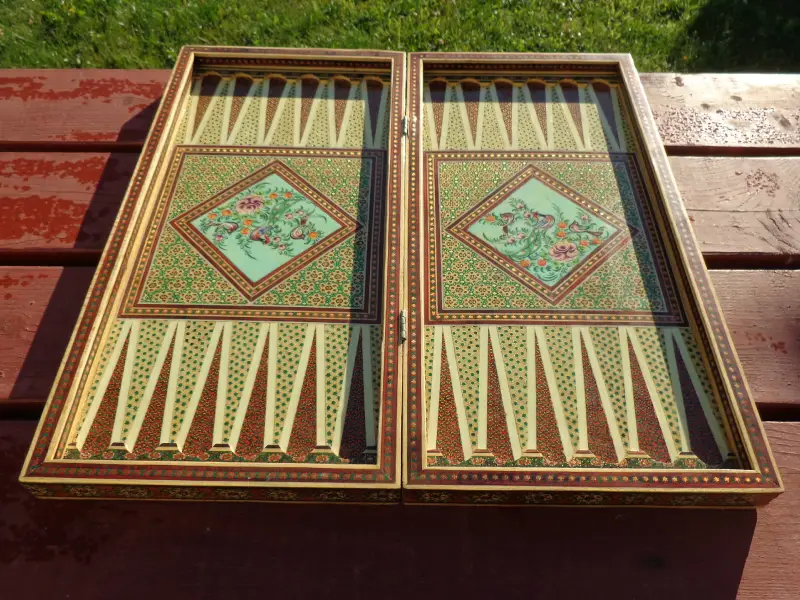
The result is a stunning mosaic-like effect that adorns a range of objects, from jewelry boxes to decorative panels. Isfahan’s Khatam-kari artisans skillfully blend precision with creativity, crafting unique pieces that showcase the city’s flair for combining tradition with innovation.
These exquisite creations not only serve as eye-catching decor but also encapsulate Isfahan’s dedication to preserving ancient techniques while celebrating the city’s rich artistic legacy.
Firoozeh Koobi
Isfahan Firoozeh Koobi, a captivating handicraft tradition, showcases the city’s mastery of intricate turquoise inlay work.
Derived from the Persian word “Firoozeh,” meaning turquoise, and “Koobi,” referring to inlay, this art form involves embedding turquoise stones into metal surfaces, typically silver or copper, to create elaborate designs.
Isfahan’s skilled artisans meticulously handcraft jewelry, decorative pieces, and accessories adorned with these exquisite turquoise embellishments.
The vibrant blue-green hues of the turquoise stones contrast beautifully against the metallic backdrop, resulting in captivating patterns that mirror the city’s historical architecture.
Minakari (Vitreous Enamel)
Isfahan Minakari, an awe-inspiring art form known for its intricate beauty, traces its origins to ancient Persia. The craft involves applying vibrant enamel colors onto metal surfaces, creating intricate designs that are then fired to achieve a durable and captivating finish.
The history of Isfahan Minakari dates back over 500 years, and it has flourished as a symbol of Persian artistry. The process begins with skilled artisans shaping the base metal into intricate forms, often inspired by traditional patterns and motifs.
Delicate enamel powders are then painstakingly applied by hand, layer by layer, before each piece is fired multiple times at varying temperatures to achieve the desired brilliance.

Isfahan Minakari pieces, including vases, plates, and jewelry, showcase a harmonious blend of vibrant colors and meticulous craftsmanship.
These stunning creations serve as both functional pieces and ornamental artworks, gracing homes, and personal collections with their timeless beauty. As souvenirs, Isfahan Minakari handicrafts embody the city’s artistic legacy, allowing visitors to take home a piece of Isfahan’s vibrant culture.
Mesgari (Repoussé and Chasing)
Isfahan Mesgari, a craft rooted in the city’s artistic heritage, encompasses the intricate techniques of repoussé and chasing, creating exquisite metalwork that has adorned Isfahan for centuries.
The history of this craft dates back to ancient times when skilled artisans would skillfully manipulate metal sheets using specialized tools to create detailed relief designs.
The technique involves both repoussé, which entails shaping metal from the back to create raised designs, and chasing, which involves refining the details on the front surface.
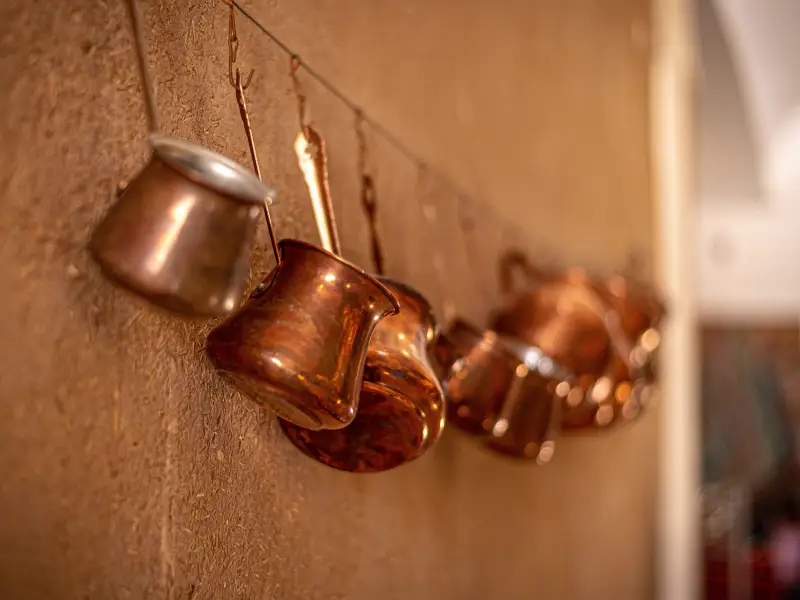
To create Isfahan Mesgari handicrafts, artisans carefully select metals like copper, brass, or silver. The metal is meticulously hammered, embossed, and engraved to bring intricate patterns and designs to life.
The resulting pieces range from decorative trays and plates to intricate jewelry and ornamental objects. As souvenirs, Isfahan Mesgari handicrafts embody the city’s history and artistry, offering visitors a tangible connection to its rich cultural tapestry.
These masterpieces, often featuring motifs inspired by Isfahan’s architectural beauty and cultural symbolism, stand as elegant reminders of the city’s timeless craftsmanship and make for treasured souvenirs that capture the essence of Isfahan’s artistic heritage.
Ghalamkari (Calico Work)
Another one of the most beautiful souvenirs to buy in Isfahan is Ghalamkari textiles. Isfahan Ghalamkari revolves around the intricate technique of block printing on textiles, yielding exquisite calico works that resonate with Isfahan’s creative spirit.
Dating back centuries, Ghalamkari was historically used to create intricate designs on fabrics, serving both utilitarian and decorative purposes.
The craft involves skilled artisans carving intricate patterns onto wooden blocks, which are then used to transfer these designs onto fabrics using vibrant dyes.
This meticulous process marries tradition with innovation, producing textiles that beautifully capture Isfahan’s heritage.
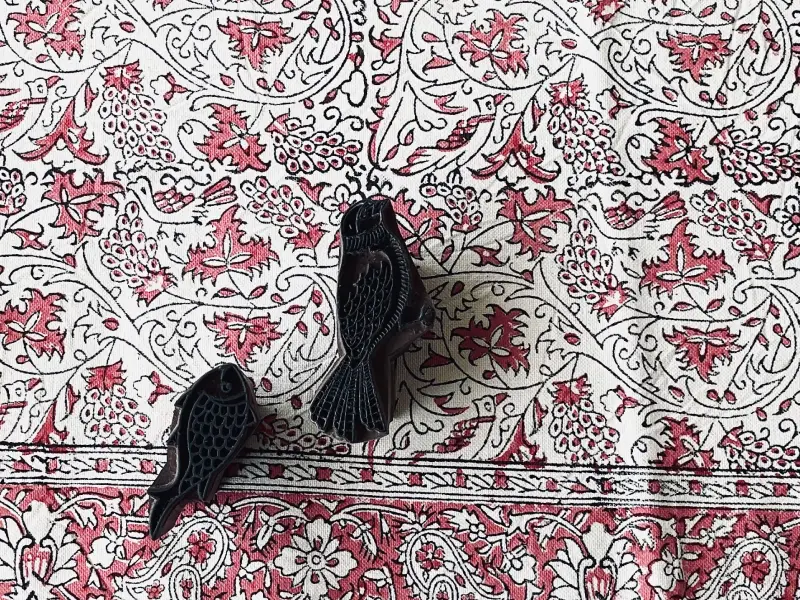
To create Isfahan Ghalamkari handicrafts, artisans begin by carving elaborate designs onto wooden blocks, each representing a part of the pattern.
These blocks are then dipped in natural dyes and pressed onto fabrics to transfer the design. This method allows for the creation of intricate and repeating patterns, resulting in visually captivating textiles.
The age-old art of Isfahan Ghalamkari continues to flourish, with textiles ranging from tablecloths and scarves to garments and decorative pieces. As souvenirs, Isfahan Ghalamkari textiles encapsulate the city’s artistic legacy, offering visitors the chance to carry home a piece of Isfahan’s history.
Monabat (Persian Wood Carving)
Dating back to the Safavid era, Monabat involves intricately carving wood to create breathtakingly detailed designs that adorn a variety of objects.
The history of Isfahan Monabat is deeply intertwined with the city’s architectural splendor, as artisans drew inspiration from the intricate motifs found in Isfahan’s famed buildings and monuments.
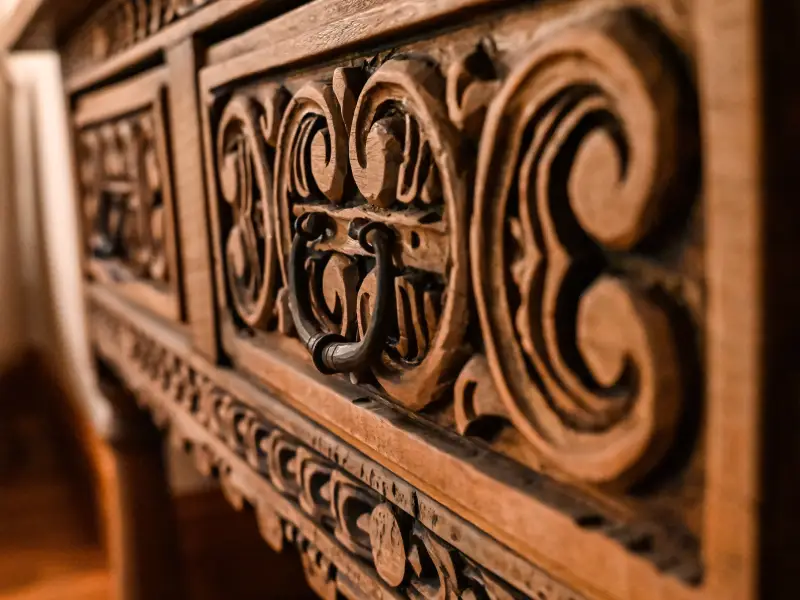
The process of creating Isfahan Monabat pieces is a meticulous art form that requires precision and patience. Skilled artisans carefully select quality wood and begin the intricate carving process, using specialized tools to bring intricate patterns and motifs to life.
The carved wood is then often enhanced with delicate painting, adding vibrant colors that highlight the intricacies of the design. Isfahan Monabat’s masterpieces range from wooden doors and windows to intricate boxes and decorative panels.
Final Word
Isfahan’s souvenirs and handicrafts are not merely decorative items; they encapsulate the city’s history, culture, and artistic prowess. From the intricate designs of Persian carpets to the delicate filigree of metalwork, each piece is a testament to the craftsmanship that has been nurtured over centuries.
By bringing a piece of Isfahan’s artistic legacy home, visitors can hold onto a tangible connection to this enchanting city and share in the beauty and significance of its traditions. Whether it is a miniature painting, a woven carpet, or a beautifully crafted metal plate, Isfahan’s souvenirs offer a gateway to the city’s past while celebrating its vibrant present.
Are you planning to travel to Iran and looking for an Iran resort? Consider Matinabad eco resort. Maybe you will find interesting things to do in Isfahan.

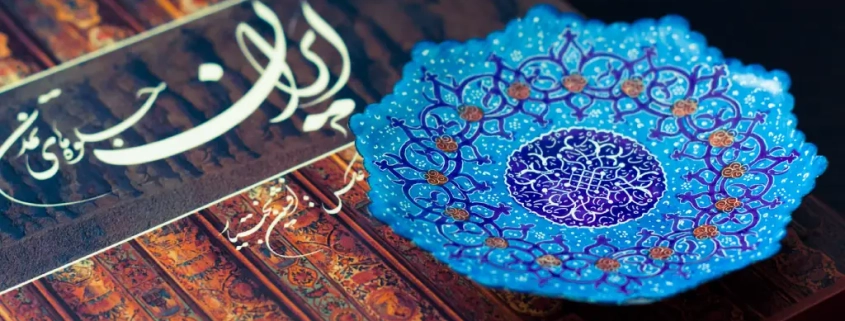



Leave a Reply
Want to join the discussion?Feel free to contribute!